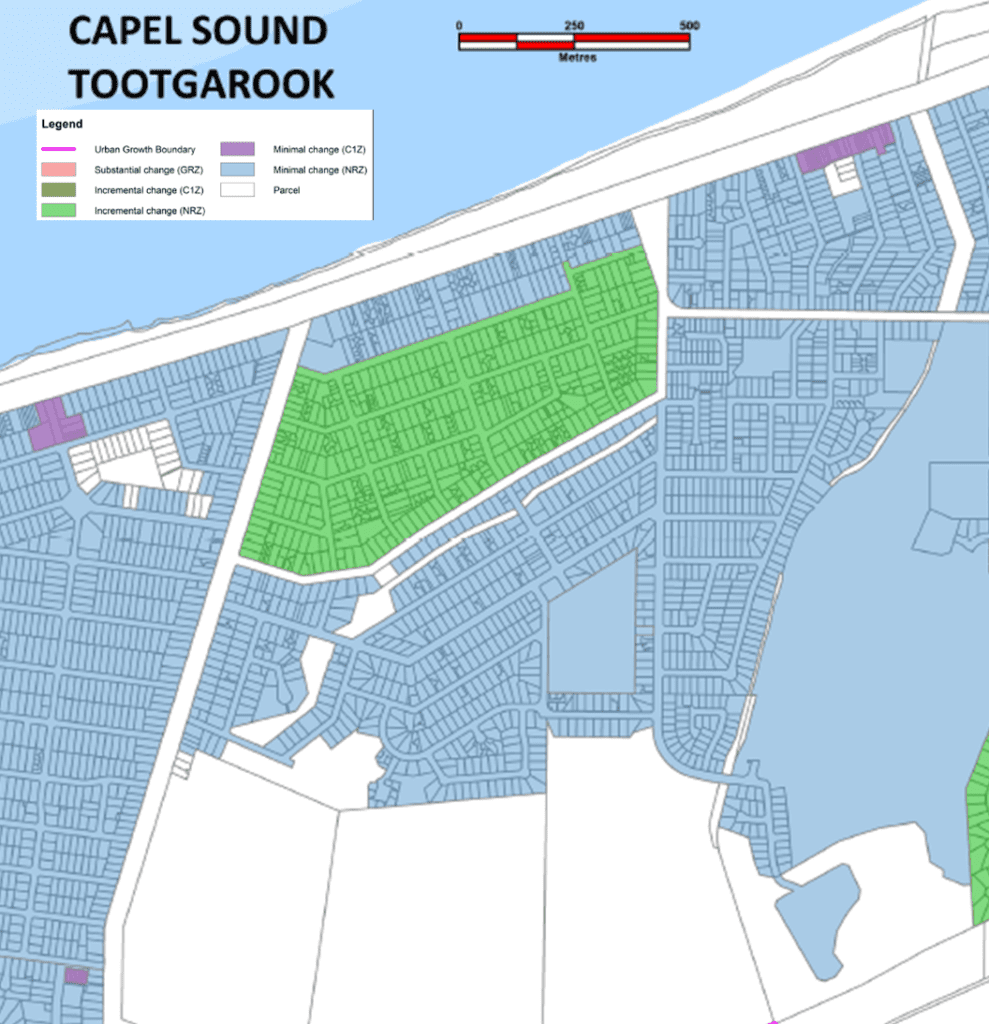02 Oct Mornington Peninsula Housing Refresh 2020

The Mornington Peninsula Housing Strategy was first adopted in 2017. Since then they have done some additional work on neighbourhood character guidelines as well as attempting to commence a planning scheme amendment. You can read more about the original housing strategy here.
Presumably, this refresh of the Housing Strategy has been done as that planning scheme amendment proposal has been stalled for a long time. The refresh has also been an opportunity to reexamine demographic information and to reassess the role and function of different areas of the Peninsula.
So, what are the details of this Refresh?
The Housing Strategy has re-examined how housing growth will be managed and directed within the Mornington Peninsula. The Housing Strategy has been brought into line with current state government directives around planning for housing and using the residential zones and ensures that the Housing Strategy is up to date with current “best practice”. This will likely smooth the way forward for future amendments to the planning scheme.
One notable change with the Refresh is that the figures on projected dwelling requirements have been increased. Under the original Housing Strategy there were two figures discussed: 15,858 dwellings projected by the State government and 9,018 dwellings projected by the Shire for the period 2016 to 2031. It was apparent within this Strategy that there was tension between the State government and the Shire with respect to this projected growth, with the Shire favouring a very conservative growth strategy. Under the Housing Strategy Refresh the figures used are only those from the State government, with a projection of 24,010 dwellings between 2016 to 2036. While the period has been increased (mostly because 3 years have already passed since the Housing Strategy was first written), it is still obvious that the Shire have conceded to the higher amount of new dwellings projected for the region.
Now with this tension is out of the way, the remaining Housing Strategy can focus on where this growth can occur while preserving the special values of the Mornington Peninsula.
The Housing Strategy identifies the areas where housing growth will be focused. This has been done through assessing the criteria of:
- Strategic Context: Considering the valuable and important aspects of the Peninsula to be retained and protected.
- Environmental Assets and Hazards: This includes considering areas of ecological value, vegetation, bushfire risk and climate change when considering what areas are suitable for housing growth.
- Connectivity: Focusing housing within the areas best served by shopping and community facilities.
- Neighbourhood Character: Using the Neighbourhood Character Study to guide the form and capacity for change that different areas on the Peninsula can manage. The Neighbourhood Character Study has also identified two special areas: Ranelagh Estate, Mount Eliza and The Avenues, Rosebud and parts of Tootgarook and Rye. It is proposed that a Neighbourhood Character Overlay be introduced into these areas to manage future development and change.
The Vision for the Housing Strategy is to manage the housing demand and population growth while recognising the special values of the Mornington Peninsula, supporting the liveability of the area and enhancing the health and wellbeing of the community.

- Recognise the capacity limits in individual towns and villages.
- Priorise the protection of residential character and amenity.
- Support current and emerging housing needs, where consistent with the role and function of an area.
- Use community consultation where significant change to the character of an area is being considered.
- Ensure development is supported by infrastructure and services.
In line with current State government direction the three broad categories of housing change: minimal, incremental and substantial have been adopted. One important point noted in the Housing Strategy is that change is relative to its context, in particular that substantial change here is different to what is anticipated for urban areas of Melbourne.
Housing Change Areas
Minimal Change Areas
The main characteristics of Minimal change areas are that they are either areas deemed ‘special’ that should be protected, or areas where the capacity of the land is signifcantly constrained such as with bushfire, flooding or erosion concerns.
In the Mornington Peninsula, Minimal change areas are already identified through the significant Overaly controls in place. Minimal change areas are those areas with special heritage, environmental, neighbourhood or landscape values or have bushfire, erosion or flooding risk.
In these areas development will be restricted to 2 storeys, with existing subdivision and overlay controls retained.
Incremental Change Areas
These are areas where housing growth will occur, but it will happen within the context of the existing or preferred neighbourhood character for an area. In Incremental change areas it is recognised that the character will evolve over time, but that new developments should respect the existing valued neighbourhood characteristics.
In the Mornington Peninsula, Incremental change areas will be in the settlements where there are no identified constraints (whether that be special features or risks), but where development is expected to respect the neighbourhood character.
In these areas development will be restricted to 2 storeys, with no subdivision controls.
Substantial Change Areas
In Substantial change areas housing intensification will occur. These are within areas that are close to facilities, jobs and services. Over time it is expected that the housing will result in a change to the built form and neighbourhood character for the area.
In the Mornington Peninsula Substantial change areas will be directed to the three Major Activity Centres in Mornington, Rosebud and Hastings and some large townships.
In these areas development of up to 3 storeys will be allowed within the commercial core and in some surrounding residential areas, in line with each areas adopted Structure Plan.
Investigation Areas
Lastly, the Housing Strategy has identified some areas that will require further investigation to determine their appropriate level of housing growth. These include parts of Mornington, Mount Martha, Tyabb and Dromana that are zoned Low Density.
Pattern of Housing Change
The majority of the housing change areas follow the pattern set by the existing Overlay controls, in particular the use of Design and Development Overlays throughout the Shire. The main notable difference is the proposal for Capel Sound to be predominantly a Minimal change area even though there are no current overlays over this land. It is unclear at this time what the controls for this area will be, since there is no existing Overlay that guides subdivision and development. Perhaps the intention is to continue the Design and Development Overlay Schedule 2 that is currently over land to the west of Truemans Road to this region to the east of Truemans Road in the future. However this is not discussed within the Housing Strategy and any such proposal would require a planning scheme amendment and significant strategic work. Until there are additional planning controls introduced in the areas of Minimal change in Capel Sound there will be little difference in housing outcomes compared to the Incremental change areas.


Subdivision
As some people will already be aware, perhaps the most controversial aspect of the original Housing Strategy was a proposed 900 square metre lot minimum in order to support a two unit development over much of the Shire. This ‘policy’ has been enforced extensively since 2017 and has resulted in a high number of applications being refused (with many of them subsequently being overturned at VCAT). The details of this is covered further here. It is pleasing to see that this has not been included in the Housing Strategy Refresh. It is noted that in areas with existing subdivision and dwelling controls through Overlays that these will continue to apply, however, in other areas that are not covered by such Overlays there is no prescribed subdivision minimum proposed. This essentially brings us back to a similar position regarding development, prior to the introduction of the original Housing Strategy in 2017. It is a relief that this period of confusion and uncertainty looks to now be behind us!
________________________________
It is considered that the Housing Strategy Refresh proposes an equitable outcome that will preserve the existing character and value of the Mornington Peninsula while not unreasonably throttling any potential development. This will be particularly in some of the more established areas like Rosebud and Mornington where there has been both a history and an expectation of future growth.
Looking to develop in the Peninsula?

